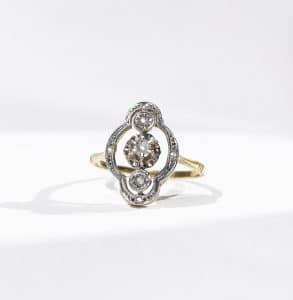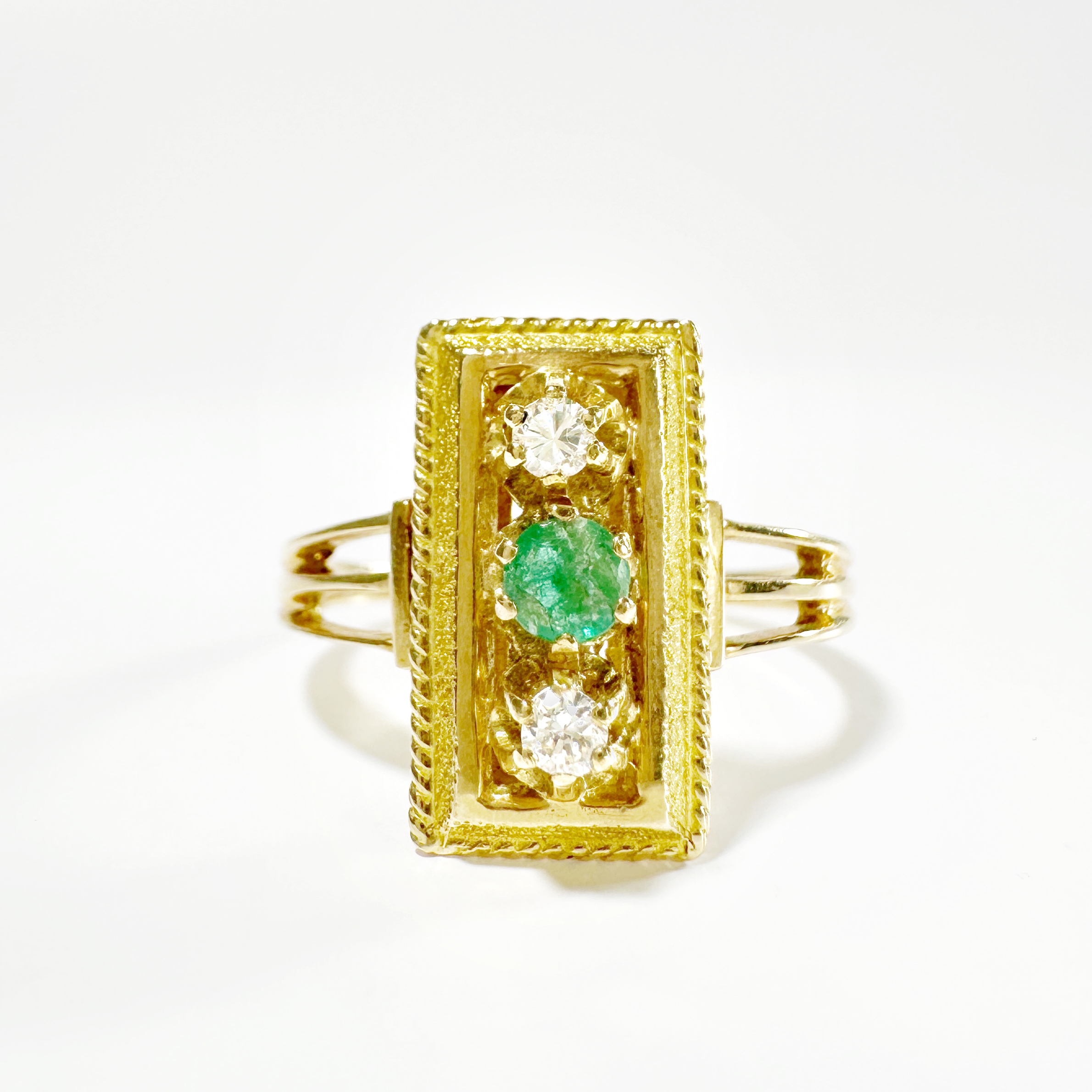 The most famous gem of all, the diamond is also the birthstone of the month of April and the ultimate symbol of eternity in jewelry. This is not surprising since its discovery dates back to the fourth century BC in India. Let’s discover here the rich history of the diamond.
The most famous gem of all, the diamond is also the birthstone of the month of April and the ultimate symbol of eternity in jewelry. This is not surprising since its discovery dates back to the fourth century BC in India. Let’s discover here the rich history of the diamond.
ORIGINS OF THE WORD “DIAMOND”
The word diamond comes from the Latin word “diamas” or the Greek “adamas” which means indomitable. As we will see, it is the incomparable hardness of this gem that earns it this name, also associated with invincibility.
HISTORY OF THE DIAMOND
 The formation of diamond responds to very specific temperature and pressure conditions, such as in a volcano or meteorite. If most diamonds are of terrestrial origin, some are of extraterrestrial origin such as the black diamonds called “Carbonado“. Until the 30s, the demand for these transparent stones remained relatively low. This lack of interest was totally reversed in the years following the Second World War. The demand for diamonds increased for its use in industry, while gemstone-grade diamonds became popular for jewelry.
The formation of diamond responds to very specific temperature and pressure conditions, such as in a volcano or meteorite. If most diamonds are of terrestrial origin, some are of extraterrestrial origin such as the black diamonds called “Carbonado“. Until the 30s, the demand for these transparent stones remained relatively low. This lack of interest was totally reversed in the years following the Second World War. The demand for diamonds increased for its use in industry, while gemstone-grade diamonds became popular for jewelry.
MAIN DIAMOND DEPOSITS
 Until the early eighteenth century, India was the world’s main source of diamonds. Even today, the most famous historical diamonds are known as “Golconda diamonds”. This underground network located not far from the Deccan province has produced since the 1720s some of the clearest and most perfect diamonds in the world. Among the latter is the “Bleu de France”, a blue diamond with a tragic history that was recut and renamed “Hope Diamond”. It is also the latter that inspired the story of the Heart of the Ocean in the famous film “Titanic”.
Until the early eighteenth century, India was the world’s main source of diamonds. Even today, the most famous historical diamonds are known as “Golconda diamonds”. This underground network located not far from the Deccan province has produced since the 1720s some of the clearest and most perfect diamonds in the world. Among the latter is the “Bleu de France”, a blue diamond with a tragic history that was recut and renamed “Hope Diamond”. It is also the latter that inspired the story of the Heart of the Ocean in the famous film “Titanic”.
From the Renaissance, the art of diamond polishing arrived in Paris and Bruges, then it was the turn of Antwerp (XVth) to become the capital of the diamond industry. It was at this time that many diamonds came to set the jewels of the kings of Europe.
The stones always came from India, but from the eighteenth century the mines began to run out. At the end of the XIXth century, the new Eldorado of diamonds became South Africa. Today, global diamond production is mainly spread across Africa, Russia, Australia and Canada.
DIAMOND COMPOSITION
 It is the hardest of the known minerals with a hardness of 10 on the Mohs scale. Although diamond is extremely strong, it is brittle and can be easily crushed or split by impact. In addition, its high refractive index promotes exceptional light dispersion. The most famous diamonds are the most colorless, but these magnificent gems come in a wide range of colors, from blue to pink to yellow.
It is the hardest of the known minerals with a hardness of 10 on the Mohs scale. Although diamond is extremely strong, it is brittle and can be easily crushed or split by impact. In addition, its high refractive index promotes exceptional light dispersion. The most famous diamonds are the most colorless, but these magnificent gems come in a wide range of colors, from blue to pink to yellow.
SYMBOLISM OF DIAMONDS
 The first diamond engagement ring was commissioned by Archduke Maximillian of Austria in 1477 for Mary of Burgundy. However, diamond engagement rings became very popular after the De Beers campaign in 1947 with the famous slogan: “A Diamonds Is Forever”. The diamond symbolizes love and beauty in jewelry. Engagement rings and eternal rings are offered as part of romantic relationships and symbolize eternal love and commitment.
The first diamond engagement ring was commissioned by Archduke Maximillian of Austria in 1477 for Mary of Burgundy. However, diamond engagement rings became very popular after the De Beers campaign in 1947 with the famous slogan: “A Diamonds Is Forever”. The diamond symbolizes love and beauty in jewelry. Engagement rings and eternal rings are offered as part of romantic relationships and symbolize eternal love and commitment.
 en
en
 Français
Français



